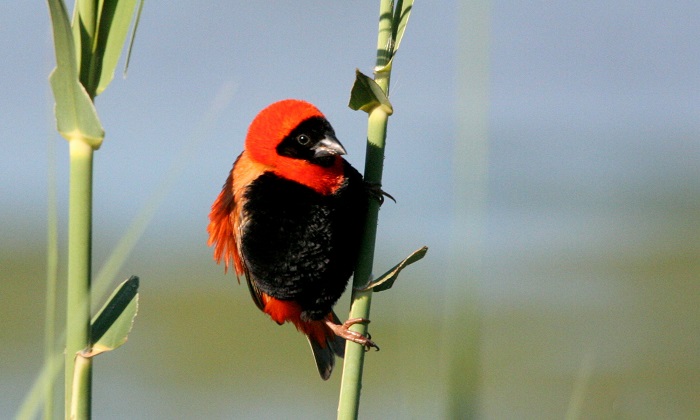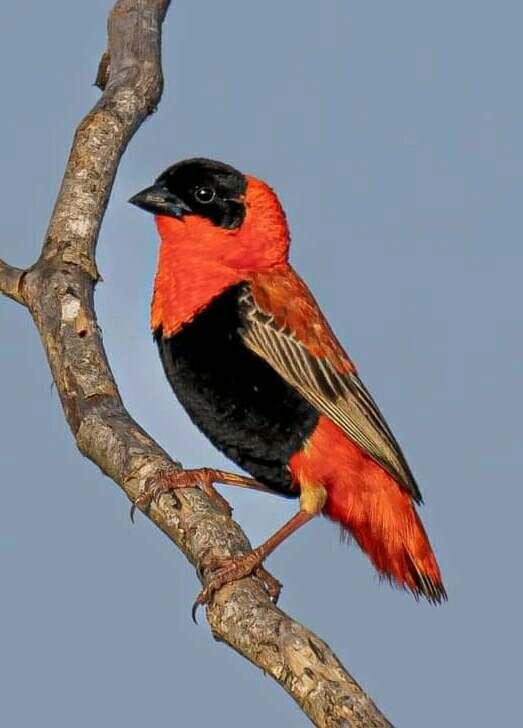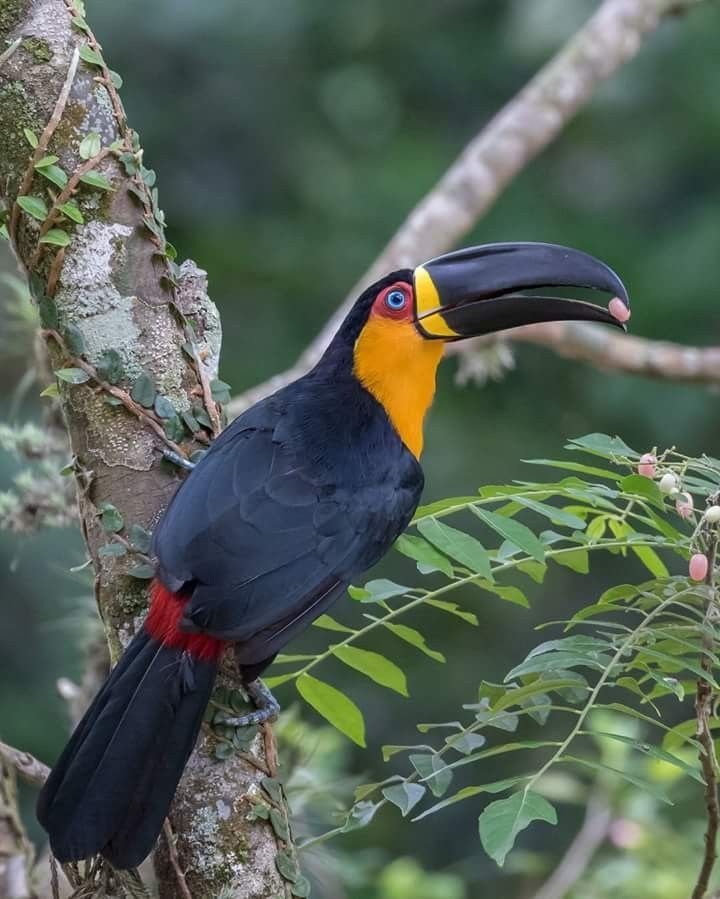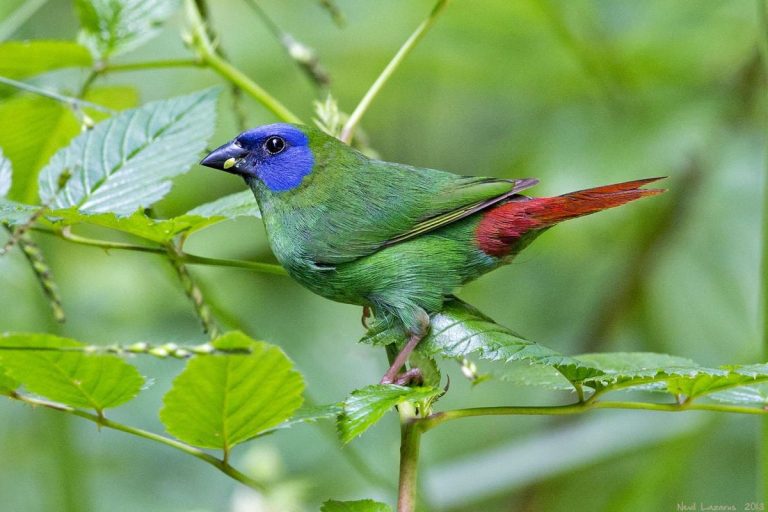The Firebird of the Reeds — The Southern Red Bishop
The wetlands shimmer in the glow of a late African afternoon. Amid the tall grasses, a sudden blaze of color erupts—a flash so brilliant it seems the sun itself has taken flight. With fiery plumage that burns against the green reeds, the Southern Red Bishop (Euplectes orix) transforms the landscape into a living canvas of flame and movement.
In breeding season, the male Southern Red Bishop is impossible to ignore. His feathers blaze in brilliant scarlet, from crown to chest, sharply contrasted by a jet-black face, throat, and belly. His stout, conical bill glints darkly as he flits between stems, wings beating furiously in short, whirring flights. By contrast, the female wears a humble cloak of streaky browns and buffs—her camouflage a quiet necessity as she tends to hidden nests. This striking sexual dimorphism embodies the species’ dual survival strategies: the male’s vivid display to attract mates and the female’s muted hues to safeguard the next generation.
Native to sub-Saharan Africa, the Southern Red Bishop thrives in grasslands, wetlands, and agricultural fields, particularly where reeds and tall grasses cluster near water. Its diet is mainly seeds, which it gleans with its strong bill, but insects become vital during the breeding season—protein-rich fuel for growing chicks. Agile and energetic, bishops often move in flocks outside the breeding season, filling the air with a chorus of cheerful chirps and buzzing calls.
When the time for courtship arrives, the reedbeds transform into a theatre. Males stake out territories and begin a feverish cycle of display flights, puffing out their scarlet feathers and hovering in mid-air like tiny flames suspended above the grass. They construct multiple oval-shaped nests from woven grass, suspended carefully among reeds just above the waterline. Each nest is a labor of persuasion: the male builds, the female inspects, and only if satisfied does she choose to line the chamber and lay her eggs. Males may court several females, their territories ringing with both rivalry and song.
Conservation-wise, the Southern Red Bishop is abundant and widespread. It adapts well to human-modified landscapes, often nesting near farms and grazing lands. However, changes to wetland ecosystems—draining, pollution, and overgrazing—remain potential threats, as do shifts in climate that alter grassland cycles.

Beyond its ecology, this bird carries symbolic weight. Its fiery plumage and exuberant displays have made it a cultural emblem of vitality and desire. In many African traditions, its presence in fields and reeds is seen as a seasonal marker, a living calendar that signals the turning of rains and fertility of the land. Bird enthusiasts across the world revere it as one of nature’s most spectacular examples of how ordinary habitats can yield extraordinary beauty.

To watch a male Southern Red Bishop in flight is to witness flame given wings. Each burst of scarlet against green reminds us that life is not only about survival—it is also about celebration. In the humble reeds of Africa, the Firebird sings, builds, and burns brightly, embodying the wild joy of existence itself.






